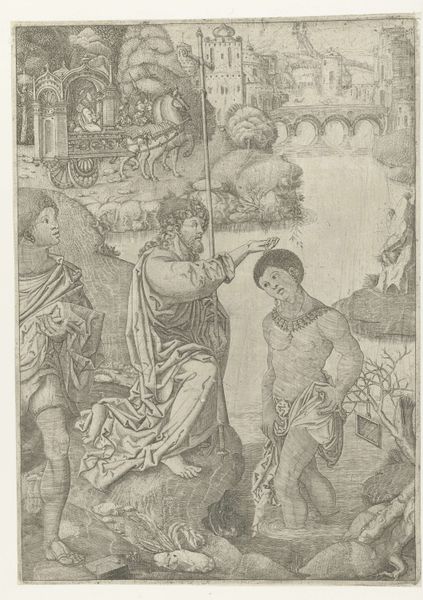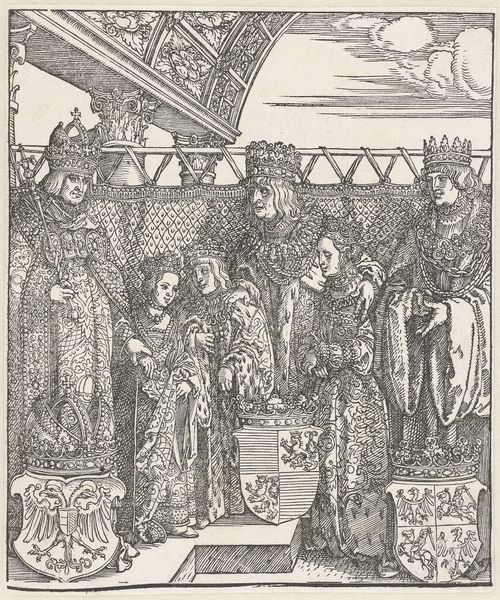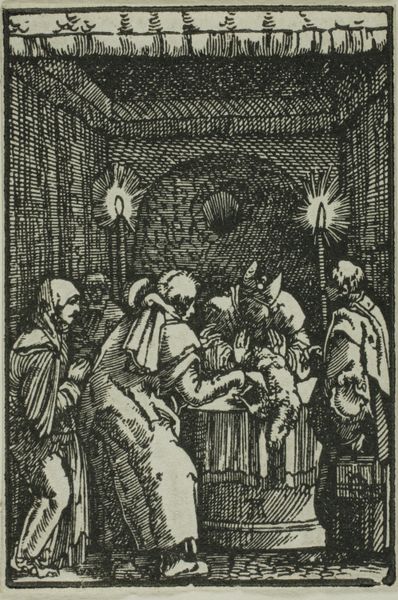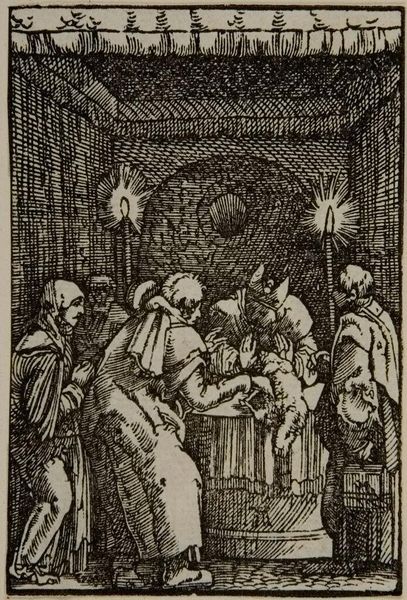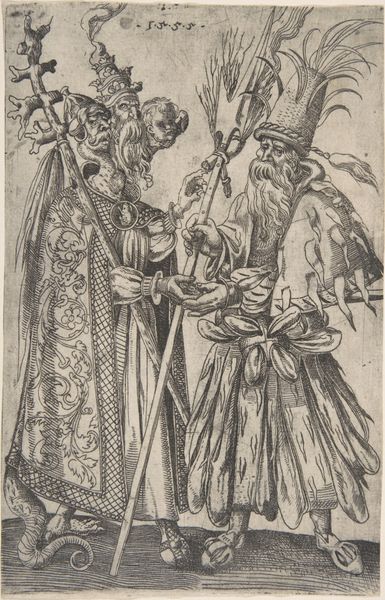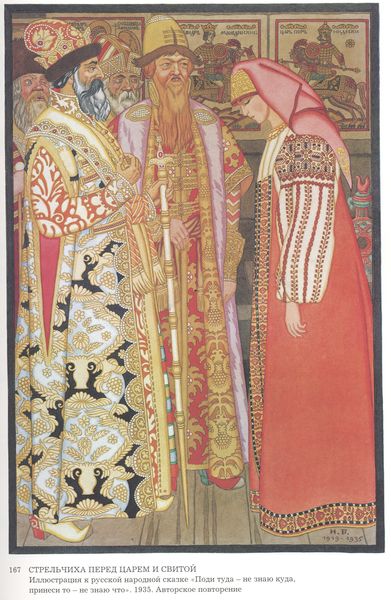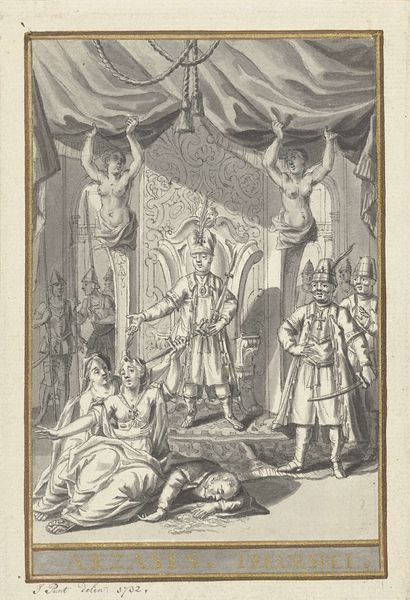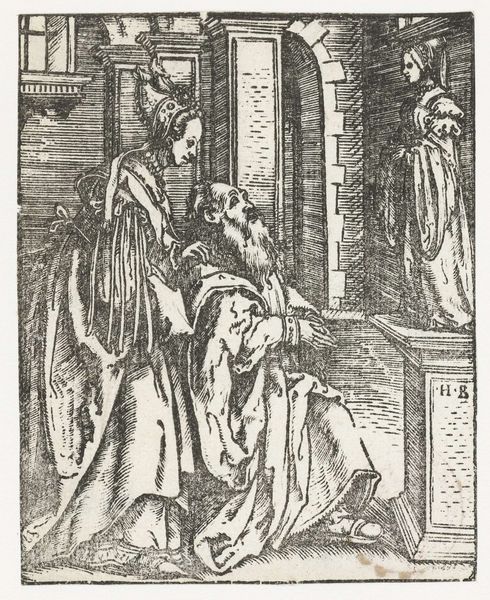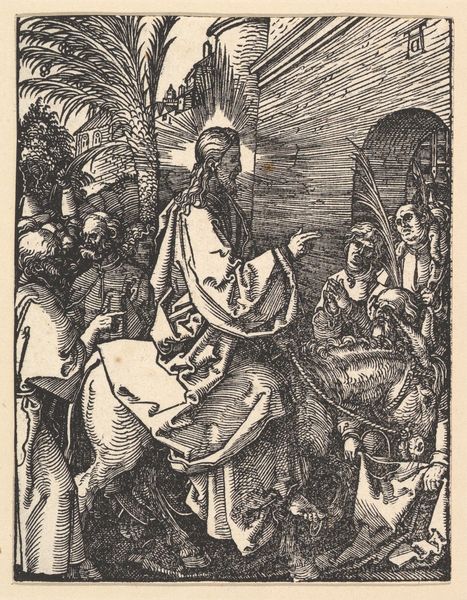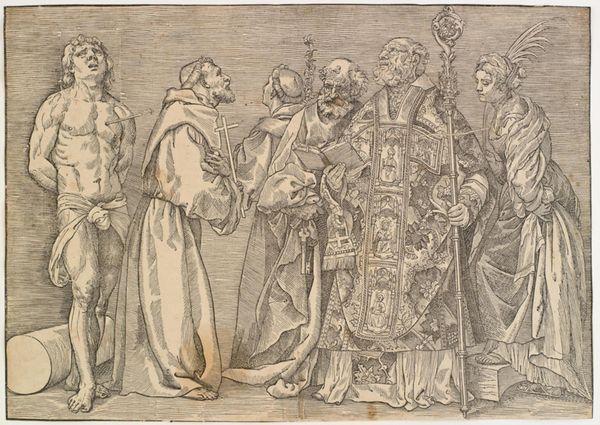
#
amateur sketch
#
quirky sketch
#
pencil sketch
#
sketched
#
incomplete sketchy
#
holy-places
#
pen-ink sketch
#
rough sketch
#
christianity
#
fantasy sketch
#
scanned work
#
initial sketch
#
christ
Copyright: Public domain
Curator: We’re looking at a pencil sketch by Nicholas Roerich titled "Kneeling warriors (Study of murals for the chapel in Pskov)", made in 1914. It's a preparatory drawing, as the final murals for the chapel in Pskov are no longer extant. Editor: It strikes me as quite spectral and unfinished. The figures seem caught between this world and another, their gestures evocative but the forms remain just suggestions. Curator: Indeed. Roerich’s application of line, the rapid and repetitive hatching, defines not just the form, but the essence of spirituality, lending it an ethereality. There’s a definite emphasis on capturing the emotive rather than purely representational aspects of the scene. Semiotically speaking, the overlapping figures could be understood as the community submitting themselves to the power of Christ. Editor: What stands out to me, however, is the material absence—or presence, depending on how you look at it. The "roughness" of the sketch is its key component, and, knowing Roerich intended for it to become a mural, invites considering the labor required to go from paper sketch to completed religious fresco, complete with preparation of the plaster and application of vibrant mineral pigments. I bet it would be an interesting commentary about devotion and dedication as well. Curator: A valid point. The sketched line, here, becomes not just form but also absence—a deliberate undercutting, a play of light, or lack thereof, that opens up dialogue. Editor: I find this all pointing towards challenging traditional views of art and labor by bridging the gap between Roerich's preparatory sketch, the destroyed mural, and potential artistic rebirth of this image through mechanical reproduction such as our audio-guide program. Curator: It certainly offers an engaging insight into Roerich's process. His technique directs our vision in many ways beyond simply what the work represents, to also consider art, its impact and the material production of religious symbolism. Editor: It’s intriguing to consider it no longer a historical absence, but also a theoretical presence. Curator: Yes, precisely—it becomes not a simple lack, but also a generative opportunity. Editor: Roerich certainly pushes our perspective.
Comments
No comments
Be the first to comment and join the conversation on the ultimate creative platform.
